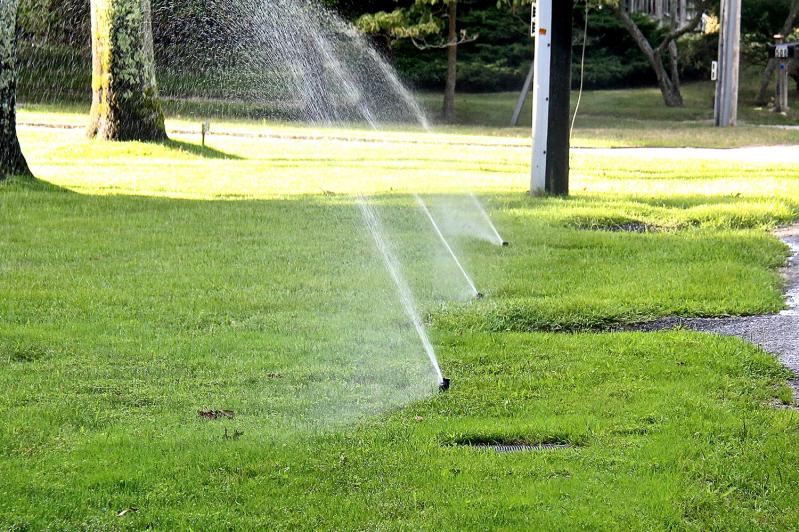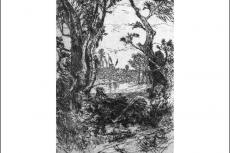While water consumption in Suffolk County has been decreasing over the past five years, consumption in the Suffolk County Water Authority's East Hampton water district has consistently grown. In fact, water pumpage for each month in 2021 has surpassed consumption during the same month in 2020, according to the water authority.
Most of the annual water consumption in Suffolk County comes during the summer months, and on the South Fork, it is irrigation that devours much of this water.
"The biggest issue that we face overall is irrigation, because irrigation has become a staple of residential development," Robert DeLuca, president of the environmental advocacy organization Group for the East End, said in an interview with The Star earlier this month. "The amount used for irrigation is greater than or equal to the amount we use to drink . . . there's a lot of work that needs to be done there."
Optimizing lawns and irrigation systems for efficient water consumption can aid conservation efforts immensely, according to a May episode of the Suffolk County Water Authority's podcast "What About Water?" that focused entirely on water conservation.
"Our water supply is bountiful, no doubt, but it's not limitless," the host, Jeff Szabo, chief executive of the water authority, said in the episode.
For those intrigued by such things, "What About Water?" offers "an inside look at your public water supply in Suffolk County. . . . Where it comes from, how it's tested for quality and safety, how it's delivered," and the threats facing it, according to a description on Apple Podcasts.
Suffolk County water is sourced from the Long Island aquifer; water filling a sink or pool can go through up to 800 feet of natural filtration before it reaches East End homes. Long Island's sole source aquifer consists of layers which contain between 65 and 120 trillion gallons of groundwater. It is possible to over-pump the aquifer, which can lead to saltwater intrusions in the groundwater, an occurrence which plagued Nassau County in the early 2000s. Saltwater intrusions are generally not reversible.
Seventy percent of the water the Suffolk County Water Authority pumps each year is pumped in the spring and summer. In 2020, according to water authority data, water consumption increased nearly tenfold from January to the peak in July, from just over 118.1 million gallons in January to just under 1.05 billion gallons in July. "If you look at it . . . that is essentially from lawn irrigation," Mr. Szabo said on the podcast. "Everybody wants a green lawn."
According to the United States Geological Survey, the average household uses about 80 to 100 gallons of water daily, which multiplies to some 365,000 gallons per year. The top 20 residential water consumers in Suffolk County each use from between 5 million to almost 16 million gallons annually, according to water authority data. The largest consumer, a Southampton resident, uses an average of 43,637 gallons per day. That's enough to provide water to 436 households with average consumption.
Most of Suffolk County's 20 largest residential consumers are South Fork residents; more than half (11) are in Southampton Town, and three are in East Hampton Town.
These top 20 use, in total, more than 165,528,093 gallons annually, which averages to 453,502 total gallons per day. The total daily usage of these top 20 consumers could provide daily water to 4,535 households with standard consumption. Their annual consumption is almost 29 times the consumption of the entire East Hampton Water District in 2020.
Optimizing lawn irrigation, then, can have a huge impact on water conservation in the county.
Lawn owners can water "less frequently, but more deeply," Mr. DeLuca said, once or twice a week for a slightly longer period. Timing is important as well, as watering when the sun is not out allows the plants and soil ample time to absorb the water. Incorporating native plants in landscape design is the most sustainable and easiest to maintain option: Because they are used to the sandy soil and climate, they require far less water, fertilizer, and pesticides. Mulch is another way to keep soil moist in lawn landscapes.
Mr. DeLuca replaced two-thirds of his own front lawn with trees and shrubs; having less area of managed turf allows more water to be conserved. "Think about it, no one waters the pine barrens," he said. "Those plants have adapted to the climate we have out here."
Allowing more time between mowing can also do wonders for water conservation. "The simplest thing that you can do is to have your grass and your lawn higher than most people do," Mr. DeLuca said. "Three-inch-high grass naturally conserves more water."
Rain and smart sensors are an easy way to optimize an irrigation system, Mike Dwyer, a certified irrigation contractor in Suffolk County, said on the water authority podcast in May. These sensors use air humidity to gauge rainfall and turn off irrigation systems accordingly, reducing costs for consumers and preventing the watering of an already-saturated ground. Customers are "amazed that they work, because they're so simple," he said.
"I've been around the industry long enough to know that irrigation is one of the biggest drains on the systems, so if I can conserve water on my customers, I know . . . [I'm] not stressing the system that already exists," Mr. Dwyer told Mr. Szabo.
Mr. DeLuca agreed.
"Everything that you can do adds up when you think about all the people across the region who are capable of doing it," he said this month. On the South Fork, "because so much of our development is residential development, that's where you can make the biggest change," he said.




